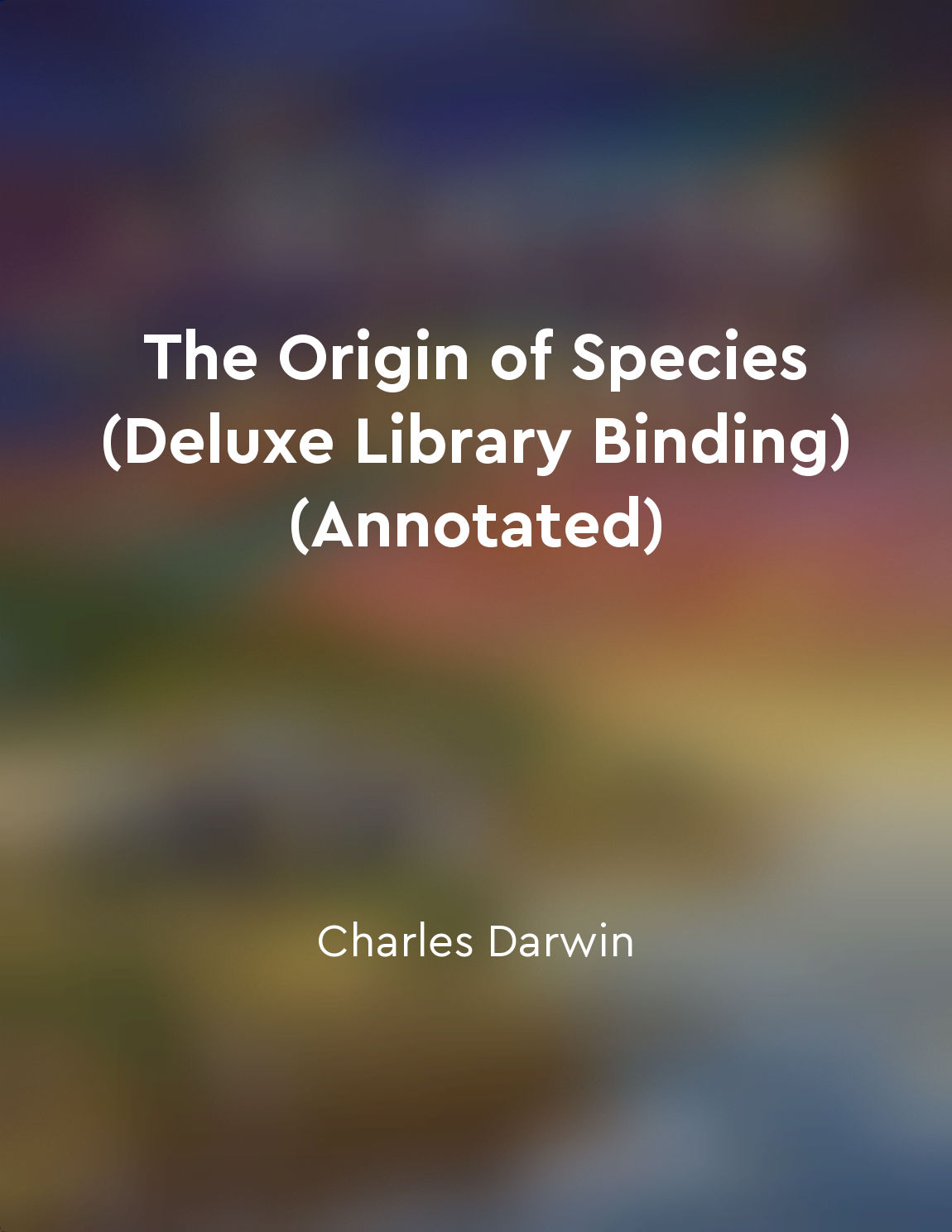Survival of the fittest from "summary" of On the Origin of Species By Means of Natural Selection by Charles Darwin
The term "Survival of the fittest" is often used, and is more accurate, as expressing the essential principle of the preservation of the individual or the preservation of favoured races in the struggle for life. This preservation, during the battle for life, depends on the individual's ability to adapt to its environment and to compete successfully with other individuals for limited resources. Those individuals that possess traits that make them better suited to their environment are more likely to survive and reproduce. Over time, these advantageous traits become more common in the population, leading to the gradual evolution of species that are better adapted to their surroundings. The struggle for existence is a term often used to describe the competition between individuals for resources such as food, shelter, and mates. This struggle is often intense, as resources are limited and not all individuals can survive and reproduce. In this competitive environment, individuals with advantageous traits have a better chance of surviving and passing on these traits to their offspring. These advantageous traits may be physical adaptations, such as camouflage or sharp claws, or behavioural traits, such as cooperation or aggression. Natural selection is the process by which individuals with advantageous traits are more likely to survive and reproduce, passing on these traits to future generations. This process leads to the gradual evolution of species, as advantageous traits become more common in the population over time. Natural selection is often described as a "blind" process, as it does not have a goal or purpose. Instead, it is simply the result of individuals with advantageous traits outcompeting those with less advantageous traits. The concept of survival of the fittest is often misunderstood as "the strongest" or "the most aggressive" individuals being the most likely to survive. However, fitness in an evolutionary sense refers to an individual's ability to survive and reproduce in its environment, not necessarily physical strength or dominance. For example, a small, fast animal may be better adapted to escape predators than a large, slow animal, and therefore may be more "fit" in that particular environment.- The concept of survival of the fittest is essential to understanding how species evolve and adapt to their environments. It is not a perfect process, and many individuals do not survive to reproduce. However, over time, natural selection leads to the gradual evolution of species that are better suited to their surroundings, ultimately leading to the diversity of life that we see on Earth today.
Similar Posts
Trade fosters mutual understanding and cooperation
Trade is far more than the simple exchange of goods and services. It is a powerful force that brings people together, fostering...

Language is a unique feature of human culture
Language is a distinctive trait of human beings, setting us apart from other animals. While other species communicate using var...

Hybridization can lead to speciation
Hybridization, the interbreeding of different species, can sometimes result in the formation of a new species. When two differe...

Survival of the fittest is key
In the natural world, competition is a constant force that shapes the evolution of species. The individuals within a population...
Selfish genes act in their own interests
The idea that genes act in their own interests may seem counterintuitive at first. After all, genes are just molecules, not sen...
Evolution is not teleological or predetermined
Evolution is often misunderstood as a purposeful process leading towards a predetermined goal. This misconception stems from a ...
Gradualism and punctuated equilibrium are modes of evolutionary change
Gradualism and punctuated equilibrium represent two contrasting modes of evolutionary change. Gradualism posits that evolution ...
Mitosis is the process of cell division
Mitosis is the process by which a eukaryotic cell separates the chromosomes in its cell nucleus into two identical sets, in two...


